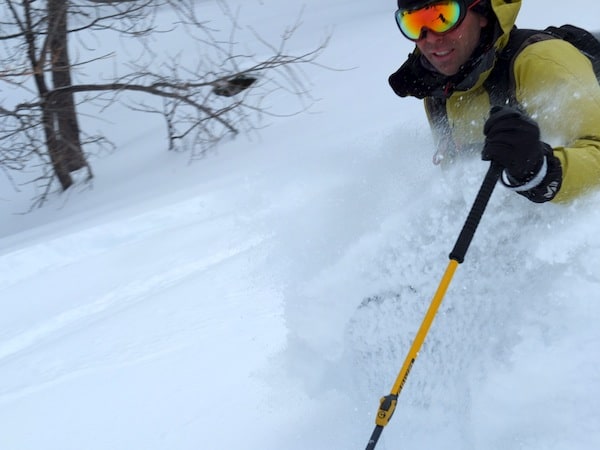
There are many ways to spend time in the mountains but there are few that beat the pleasure of a day spent gliding through fresh powder. The cares and worries of everyday life are left behind for a magical few hours of total commitment to nature and all she can throw at you.
Good preparation of both yourself and your equipment is what counts and it can make the difference between a day that feels like a session in purgatory and one where you wish that time could just stand still. Here are my personal off-piste tips – for getting the best out of a day in the powder:
1. Use the most versatile skis you can for your ability level
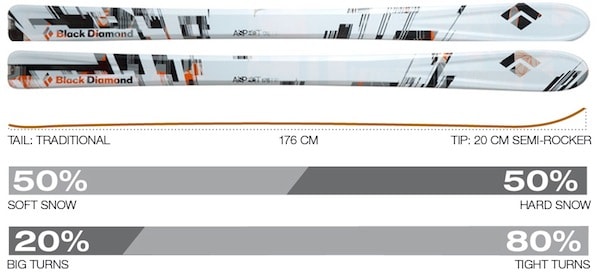
You can take short, stiff, slalom skis off-piste but why bother? You can invest in the off-piste equivalent of World Cup downhill skis – huge great planks that look amazing in the cable-car but often feel like a pair of RSJs on the end of your legs. To get the best out of the day off-piste get yourself some wide (but not too wide) skis that are designed with the backcountry in mind. There are lots of fantastic powder skis around that work just as well on hardpack but there are very few piste-oriented skis that work well in the deep snow. My favourites are the Black Diamond Aspects– wide shovels, a decent sidecut and light as a feather. The slight front rocker provides all the lift you need to keep you turning all the way from the first lift in the morning until home time and a well-deserved beer.
2. Make sure your boots really are comfortable
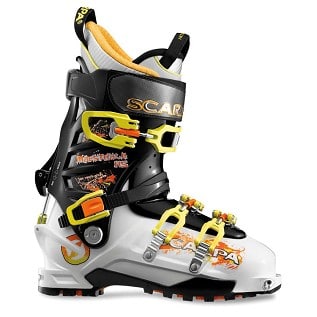
Skiing off-piste puts far more stress on your feet than a day’s cruising round the pistes. If your boots don’t fitwell you’ll soon out after about an hour in the powder. Having tried lots of different boots I’ve come to this conclusion: the key elements to forgetting about your feet and getting on with enjoying the powder are firstly having a boot that is relatively soft and flexible with a “walk” mode that will help with any non-downhill parts of your day. Secondly, a thick rubber sole to provide grip on any scrambling you may do. There are lots of crossover boots now from the world of ski-touring that are as light as a feather but as stiff as a conventional piste boot. Have a look at the models from Scarpa, Dynafit, Black Diamond, Salomon, Garmont.
3. Get some touring bindings & learn how to put your skis back on
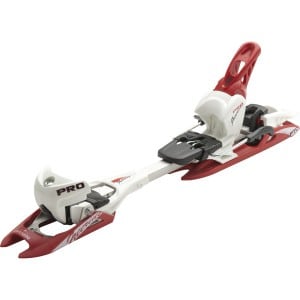
You can use normal piste bindings for powder skiing but I find that the light weight and flexibility of specially designed touring models, which also allow you to walk uphill with skins, are definite pluses. Once you’re away from the marked runs you often have to get in and out of the best descents under your own steam. A 100m sidestepping climb in deep snow to access a gorgeous open bowl – or to avoid a dodgy-looking slope – can test even the strongest legs. Off-piste you always need to keep some energy for the unexpected. There are many new and established players in this section of the market. Salomon and Marker provide big, burly bindings that are designed for heavy use and as much cliff-jumping as you can throw at them. Other manufacturers like Dynafit, Diamir and Look (the classic French make) make lighter, more versatile set-ups that can power you up or downhill all day.
Touring skins are an optional but very useful extra. These days you don’t even have to take a full set of touring skins with you as you can now buy a mini-set of Kicker Skins that clip on under your bindings and provide enough grip to take you uphill whenever necessary – from accessing a col for an untracked descent to reaching a point where there’s a mobile phone signal after an accident.
4. Don’t bring your bent downhill racer poles
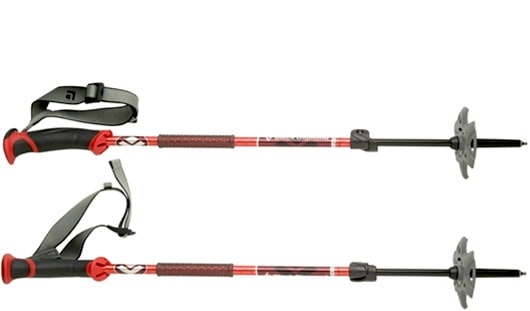
The choice of ski poles is often relegated to “whatever’s in the boot of the car”, but choosing the right or wrong ones can make a big difference to your day. For my money the best have a simple clip that allows you to shorten or lengthen them as required, a large basket to stop them sinking into the deep snow and additional rubber grips below the handles to help with any long traverses or climbing out of snow holes. The length adjustment factor is important when you’re faced with a long skate or push back to civilization – open them up to their maximum length (often 140cm+) and you’ll be amazed how much easier that annoying pole-out can be.
5. Take just the essentials and learn how to use your pack
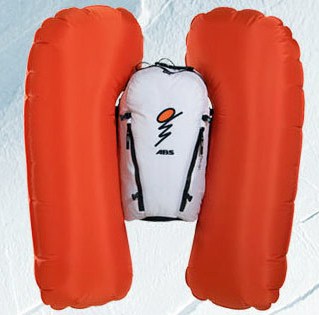
As with most areas of ski equipment, the variety of rucksacks available grows ever greater as each season rolls around. You can choose from incredibly lightweight models with no additional safety features to fully-loaded avalanche packs with exploding gas canisters that inflate a protective airbag around you in case you’re caught in a slide.
Every season a number of these are activated by mistake inside cable-cars. This can be very embarrassing but has the far more serious side-effect of rendering them useless for the rest of the day. Make sure you know exactly which toggle to pull and when. The debate is endless on the pros and cons of the latest models, but what remains equally important is what you put inside your pack. A shovel and probe in case an avalanche hits your group are essential, a spare down jacket or gilet for when the weather changes, a map of where you’re going and a compass that you know how to use are also very important. Don’t just rely on the latest app on your smartphone. Some chocolate, sun cream, a first aid kit and of course a copy of your ski insurance policy.
If you’re heading out on a day when the snow is pelting down, a small waterproof bag to keep spare gloves, hat and a T-shirt is really useful. You’re going to get hot and damp on a day like this and having a dry change of these items can make heading back out after lunch a lot more comfortable.
What you don’t need is a bag full of hi-tech wizardry weighing you down and being about as useful as a chocolate teapot. A mobile phone is essential but carrying an iPad, a tripod and a long lens paparazzi camera kit is not going to be much fun. Make sure you’ve got the local rescue numbers on speed dial on your phone too – trying to remember what the local number is or calling directory enquiries in a foreign language simply wastes time.
A couple of useful extras include a long ski strap to tie the tips of your skis together: If you need to walk anywhere with your skis on your rucksack these keep the tips from swinging round your head like a massive set of scissors. I also put some evo-grip stickers on the top of my skis – place them just above the bindings where you pick up your skis see how much easier it is!
The most inappropriate item I ever saw in a rucksack belonged to a Withnail-esque friend of mine. It was a hardback copy of “A Suitable Boy” by Vikram Seth – all 1349 pages of it!
6. Do not leave home without an avalanche transceiver
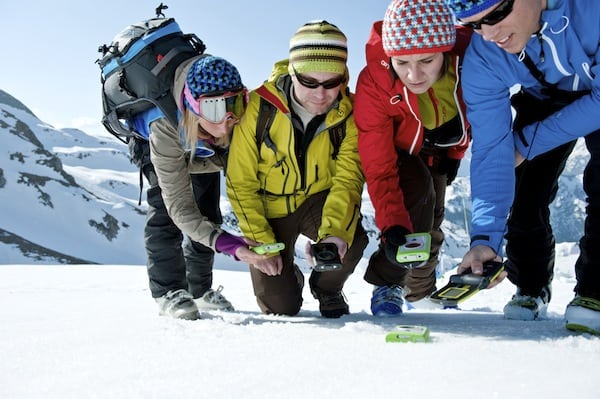
Of all the gear you need to think about when venturing off-piste your transceiver, or “beep” as most people call them, is probably the single most important thing to remember. There are a multitude of models available but a recent development has been the introduction of new versions that are much simpler to use. When an avalanche hits panic and confusion reign, the quicker you can get your beep into “search” mode the more effective and useful you’ll be.
Going off-piste without knowing how to use one of these devices is madness and most resorts now have areas where you can go and practice using your beep. Just try and find six buried devices in the standard 15-minute test time and you’ll see how important it is to practice, practice and practice again. Once you’ve found them all stop and think: what it would be like if you were the one buried under the snow hoping your friends knew which button to press on their transceivers?
Learning to ski off-piste with a professional such as a mountain guide or suitably qualified instructor is a valuable investment. You’ll learn how to adapt your technique, how to “read” the mountains and most importantly what to do if something goes wrong.










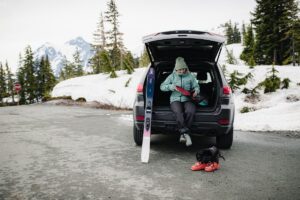
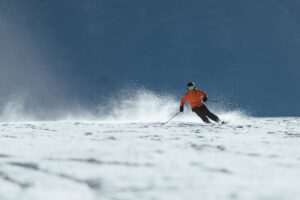
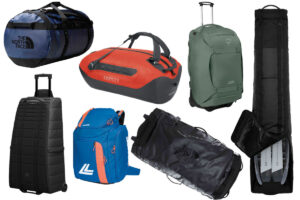
The essentials for a day off-piste: https://t.co/lAvhnqGE
RT @welove2ski: The essentials for a day off-piste: https://t.co/x9NZVbrP
Paddy O’Powder’s Top Tips for a Day Off-Piste https://t.co/wy2xzn7L via @welove2ski
Great article, especially the sections about transceivers. These are so important, especially off piste and with all the heavy snow falling across the alps! Ski Safe!
Thanks, we’re pleased you like it.
RT @PowderNShine: Paddy O’Powder’s Top Tips for a Day Off-Piste https://t.co/wy2xzn7L via @welove2ski
RT @welove2ski: The essentials for a day off-piste: https://t.co/phnULXfz
Paddy O’Powder’s Top Off Piste Tips https://t.co/GtXPAh7O via @welove2ski